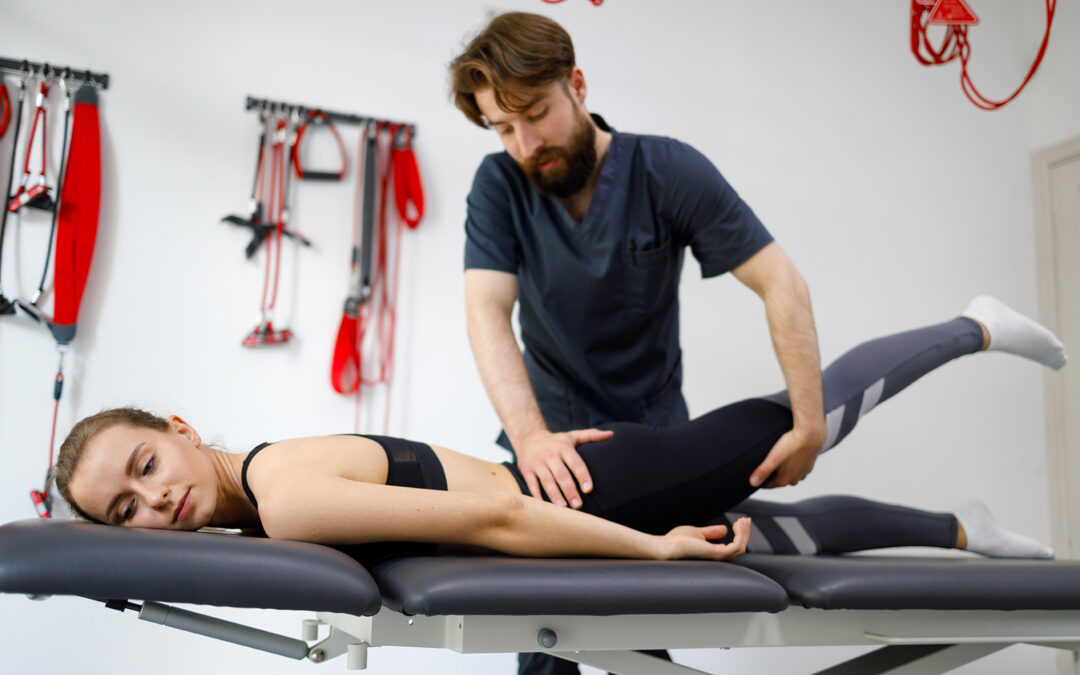Contents
A physical therapy specialty is a specific area of practice within the broader field of physical therapy. To become a specialist, physical therapists must complete additional education and training beyond their initial Doctor of Physical Therapy (DPT) degree. This specialization allows them to provide highly targeted and effective care for patients with unique needs.
The path to physical therapy specialization
There are two primary pathways to physical therapy specialization:
- Residency — According to the American Physical Therapy Association (APTA), “residencies are post-professional planned learning experiences that provide essential knowledge, skills and responsibilities of an advanced physical therapist within a defined area of practice.” A residency program takes a minimum of 10 months and up to 18 months to complete.
- Fellowship — A fellowship is an accredited postprofessional program offered by universities and other institutions, such as a hospital or large physical therapy practice. Similar in length to a residency, a fellowship can take as few as 10 months and up to 18 months to complete. A fellowship is an intensive training program for advanced clinical training and experience in subspecialty areas.
19 types of physical therapy specialization and subspecialization
According to the APTA, as of June 2024, over 40,000 physical therapists have achieved board certification as clinical specialists in physical therapy. There are currently 10 board-certified specialized paths to choose from:
- Cardiovascular and pulmonary — Physical therapists specializing in cardiovascular and pulmonary health focus on patients who have heart or lung conditions. This specialty can be critical for patients recovering from heart attacks as well as those with chronic obstructive pulmonary disease (COPD), asthma and other respiratory issues. These PTs work with their patients to improve their endurance, breathing and overall physical strength, helping them keep and improve their cardiovascular and lung health. This specialty is ideal for PTs who are interested in helping patients improve their cardiovascular and respiratory health, especially those who enjoy working with complex, life-impacting conditions.
- Clinical electrophysiology — Clinical electrophysiology focuses on assessing and treating patients with neuromuscular disorders using electrical stimulation and other devices. PTs in this specialty may use technologies like electromyography and nerve conduction velocity testing to assess their patients’ nerve and muscle function. Clinical electrophysiology is ideal for PTs who are drawn to technology and interested in the electrical functions of muscles and nerves. It allows PTs the chance to work with cutting-edge technologies and equipment.
- Geriatrics — Physical therapists specializing in geriatrics help older adults improve or keep their mobility, balance and strength. PTs in this specialty often work with patients who have arthritis, osteoporosis, balance issues or age-related conditions. Geriatric physical therapy can be rewarding for PTs who love working with older adults.
- Neurology — Neurologic physical therapists work with patients who have neurological conditions such as strokes, brain injuries, spinal cord injuries, and degenerative diseases like Parkinson’s and multiple sclerosis. Neurology focuses on helping patients improve their movement, coordination and function. This specialty is ideal for PTs interested in helping patients with life-changing neurological conditions by making a huge impact on their quality of life.
- Oncology — Physical therapists specializing in oncology focus their care on patients who have cancer or are recovering from cancer treatments. These PTs help their patients work to improve their strength, reduce fatigue and improve their overall quality of life. This specialty allows PTs to make a real difference in the lives of people dealing with cancer. It’s perfect for PTs who are compassionate and dedicated to helping patients through some of the toughest times of their lives.
- Orthopaedics — Orthopedic physical therapists help patients experiencing musculoskeletal conditions, like joint injuries, back pain or postsurgery recovery. This specialty often focuses on helping patients strengthen muscles, improve flexibility and reduce pain and is ideal for PTs who enjoy working with people recovering from injuries or surgeries.
- Pediatrics — Pediatric physical therapists work with infants, children and teenagers who have physical disabilities, injuries or developmental conditions. Pediatric PTs create fun and engaging exercises to help their young patients build strength and improve motor skills. Pediatric PTs have a unique opportunity to have a positive impact on children’s lives. If you enjoy working with kids and helping them grow and thrive, this specialty could be a great fit.
- Sports — Physical therapists specializing in sports work with athletes of all different levels, from amateurs to professionals. These PTs focus on helping athletes prevent sports-related injuries and improve their athletic performance. They can also help treat sports-related injuries. This is a perfect specialty for PTs who are passionate about sports and helping athletes perform at their best. It’s also a chance to work in a dynamic, fast-paced environment.
- Women’s health — Women’s health physical therapists focus on treating women’s health issues, such as pelvic floor disorders, pregnancy and postpartum recovery, and other gender-specific health concerns. It’s a highly rewarding area for PTs interested in helping women improve their health and wellness.
- Wound management — Physical therapists specializing in wound care focus on treating patients with complex wounds, including postsurgical wounds, burns and ulcers. Wound care is ideal for PTs who enjoy problem-solving and want to help patients with challenging conditions heal faster.
Beyond the core specialties, physical therapists can pursue fellowships and subspecialties to further specialize their practice. Subspecialties of physical therapy include:
- Critical care — Critical care physical therapy focuses on treating patients in intensive care units (ICUs) or with severe illnesses. Critical care physical therapists help patients who are bedridden or have limited mobility improve function and prevent complications, like muscle atrophy or blood clots.
- Hand therapy — Physical therapists who subspecialize in hand therapy focus on treating injuries and conditions related to the hand, wrist and forearm. PTs in this subspecialty work with patients recovering from hand surgeries, fractures or conditions like carpal tunnel syndrome.
- Neonatology — Neonatal physical therapists specialize in working with infants, especially those born prematurely or with developmental challenges. PTs help their infant patients improve motor skills, strength and coordination.
- Neurological movement disorders — Physical therapists subspecializing in neurological movement disorders focus on specific neurological conditions, like Parkinson’s disease or multiple sclerosis, that affect movement. These PTs help their patients work on improving balance, coordination and strength.
- Orthopedic manual physical therapy — Physical therapists who subspecialize in orthopedic manual physical therapy concentrate on learning advanced hands-on techniques for treating musculoskeletal issues. These techniques allow physical therapists to help alleviate pain and improve joint and muscle function in patients with orthopedic conditions.
- Performing arts — Subspecializing in performing arts allows physical therapists to treat dancers, musicians and other performing artists. They can also help performers with injury prevention and improving movement specific to their art form.
- Spine — Physical therapists who specialize in conditions affecting the spine, such as herniated discs, scoliosis or chronic back pain, focus on their patients’ spinal alignment, pain reduction, and improving their mobility through specialized exercises and manual techniques.
- Sports division I — Physical therapists can subspecialize in sports and focus on high-level collegiate athletes. These PTs may work directly with college teams to prevent and treat injuries and improve athletic performance.
- Upper extremity athletes — An additional sports subspecialty is focusing on upper extremities in athletes. This focus is on athletes who rely heavily on their upper bodies, like pitchers, quarterbacks or tennis players. These PTs work on their patients’ shoulder, arm and wrist strength, flexibility and injury prevention.
Physical therapy specialties and subspecialties offer a wide range of opportunities for physical therapists to make a difference in the lives of their patients. By pursuing advanced training and education, physical therapists can develop the expertise needed to provide highly specialized and effective care. Whether you’re interested in working with athletes, older adults or critically ill patients, there’s a physical therapy specialty out there for you.
Shape your future in physical therapy by joining our team at Lattimore Physical Therapy
At Lattimore PT, we’re committed to fostering a team of dedicated professionals who are passionate about providing specialized care to help patients reach their fullest potential. Joining our team means becoming part of a collaborative environment that values continuing education, expertise and compassion. We encourage our physical therapists to pursue specialized training, as we know how impactful it can be for patients to receive focused, expert care. With over 30 staff members with their Certification in Orthopedic Manual Physical Therapy, we’re proud to support specialists who are deeply committed to making a difference. If you’re excited about expanding your skills and making a meaningful impact, consider joining us at Lattimore Physical Therapy, where your growth is our priority.
Check out our Careers page today for more information about available positions on our team.



